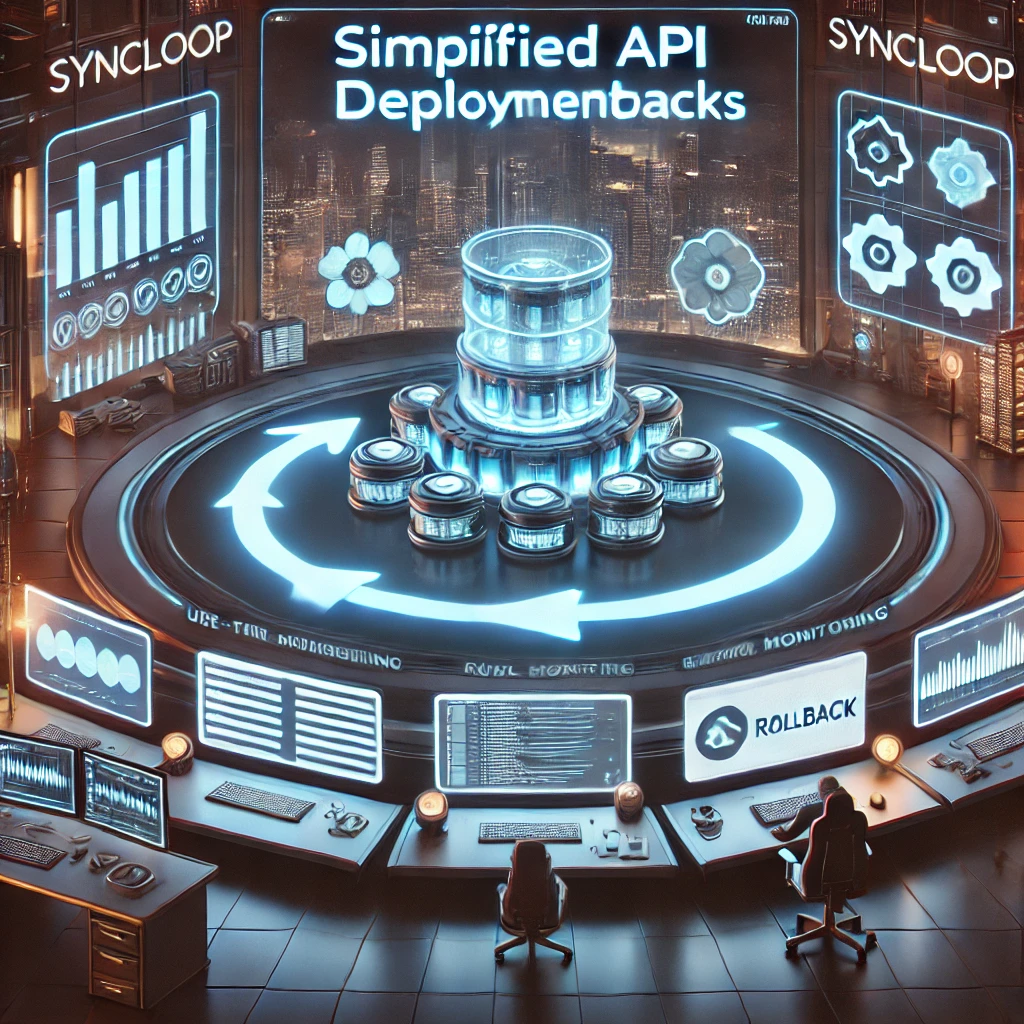Simplifying API Deployment Rollbacks with Syncloop

Syncloop, an advanced API development platform, simplifies deployment rollbacks with intuitive tools and features designed to handle even the most complex scenarios. This blog explores how Syncloop streamlines API rollbacks, its key capabilities, and best practices for ensuring seamless deployment workflows.
The Importance of Rollbacks in API Deployment
API deployment rollbacks are critical for mitigating the risks associated with production releases. Key reasons to implement rollbacks include:
- Bug Management: Reverting changes quickly when unexpected bugs or errors are identified.
- User Experience: Minimizing downtime and ensuring a consistent user experience during deployments.
- Compliance: Restoring previous versions to maintain compliance when new deployments introduce issues.
- Business Continuity: Preventing disruptions to revenue-generating activities or mission-critical systems.
Efficient rollbacks reduce the risks of deployment failures and enable teams to recover quickly.
How Syncloop Simplifies API Deployment Rollbacks
Syncloop provides a robust framework for managing rollbacks with the following features:
1. Version Control
Syncloop automatically tracks API versions, allowing developers to revert to any previous version with minimal effort. This versioning ensures that rollbacks are precise and effective.
2. Immutable Deployments
Each deployment in Syncloop is treated as an immutable entity, ensuring that a rollback doesn’t inadvertently introduce partial updates or inconsistent states.
3. Rollback Automation
Syncloop’s deployment workflows include automated rollback triggers, allowing teams to define conditions under which rollbacks should occur, such as specific error thresholds or failed health checks.
4. Staging and Canary Deployments
With support for staging environments and canary deployments, Syncloop enables teams to test new versions in controlled environments. If issues arise, rollbacks can occur without affecting the broader user base.
5. Comprehensive Logging
Syncloop’s detailed logs provide insights into deployment activities, helping teams identify the exact point of failure and execute targeted rollbacks.
6. Rollback API
Syncloop offers APIs for managing rollbacks programmatically, enabling integration with CI/CD pipelines for faster and more automated workflows.
Benefits of Using Syncloop for API Rollbacks
1. Reduced Downtime
Syncloop’s automated rollback mechanisms ensure minimal downtime during deployment failures, preserving system availability.
2. Faster Recovery
With tools like version control and automated triggers, Syncloop enables teams to identify and resolve issues quickly.
3. Improved Reliability
Syncloop’s immutable deployments and staging workflows ensure rollbacks restore systems to a reliable, well-tested state.
4. Enhanced Team Productivity
By simplifying rollbacks, Syncloop reduces the time and effort spent troubleshooting deployment failures, enabling teams to focus on innovation.
5. Scalability
Syncloop’s rollback features are designed to scale, making them suitable for small projects and enterprise-level systems alike.
Real-World Applications of Syncloop Rollback Features
1. E-Commerce Platforms
Syncloop ensures seamless rollbacks for APIs handling payment processing, order management, and inventory updates, preventing disruptions during high-traffic events.
2. Financial Services
In banking and fintech, where precision is paramount, Syncloop’s rollback capabilities help maintain operational continuity during API updates.
3. SaaS Applications
For SaaS platforms, Syncloop enables safe rollbacks of user-facing APIs, preserving customer trust and satisfaction.
4. IoT Systems
Syncloop’s rollback mechanisms ensure stability for APIs managing connected devices, minimizing risks of widespread disruptions.
Best Practices for Rollbacks with Syncloop
- Implement Versioning from the Start: Use Syncloop’s version control to ensure all deployments are traceable and reversible.
- Test Rollbacks Regularly: Simulate rollback scenarios in staging environments to identify and address potential issues.
- Leverage Staging and Canary Releases: Use these features to validate changes in controlled environments before rolling them out broadly.
- Define Clear Rollback Triggers: Set automated rollback conditions, such as error rates or latency thresholds, to act swiftly when issues arise.
- Monitor Post-Rollback Performance: Use Syncloop’s logging and monitoring tools to ensure rollbacks restore expected performance levels.
- Integrate with CI/CD Pipelines: Automate rollbacks as part of your deployment workflows for consistent and reliable execution.
Conclusion
API deployment rollbacks are a critical component of modern development workflows, ensuring systems remain reliable and user experiences are not disrupted. Syncloop’s comprehensive rollback tools provide developers with the confidence to deploy updates without fear of catastrophic failures.
By leveraging Syncloop’s version control, automation, and monitoring capabilities, teams can simplify rollbacks, reduce downtime, and enhance the overall quality of their deployments. Whether you’re managing APIs for e-commerce, finance, or SaaS, Syncloop ensures your rollbacks are efficient, seamless, and scalable.
A visual representation of an API rollback workflow, highlighting automation triggers, version control, and staging environments, powered by Syncloop.
Back to Blogs